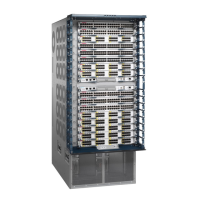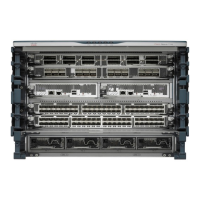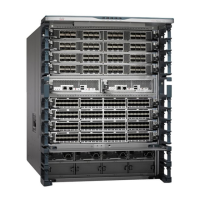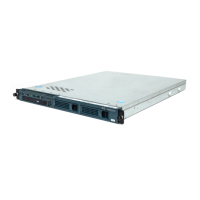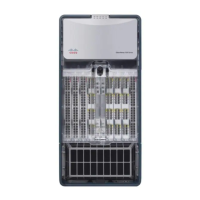Product Overview 1-53
Physical Description
The router supports a maximum of five HIPs for a total of five HSSI interfaces. There are no
restrictions on slot locations or sequence; you can install a HIP in any available interface processor
slot.
MultiChannel Interface Processor (MIP)
The MIP provides up to two channelized E1 or T1 connections via serial cables to a channel service
unit (CSU). On the MIP, two controllers can each provide up to 24 virtual channels. Each virtual
channel is presented to the system as a serial interface that can be configured individually.
The MIP, shown in Figure 1-22, provides two controllers for transmitting and receiving data
bidirectionally at the T1 rate of 1.544 Mbps and at the E1 rate of 2.044 Mbps. For wide-area
networking, the MIP can function as a concentrator for a remote site.
Figure 1-22 Multichannel Interface Processor (MIP)—Dual-Port Module Shown
The Cisco 7000 supports a maximum of four MIP modules for a total of 8 MIP ports and up to 240
MIP serial interfaces. There are no restrictions on slot locations or sequence; you can install a MIP
in any available interface processor slot.
The MIP is compatible with any Cisco 7000 series router that is operating with the following
software and microcode:
• The system software is Cisco Internetwork Operating System (IOS) Release 10.0 or later.
• The microcode version is Release 1.4 or later.
Specification for the T1 are provided in “Plant Wiring” in the chapter “Preparing for Installation.”
H2277
Enabled
LOCAL ALARM
U41,
microcode
ROM
REMOTE ALARM
LOOP
1
T0
T1
0

